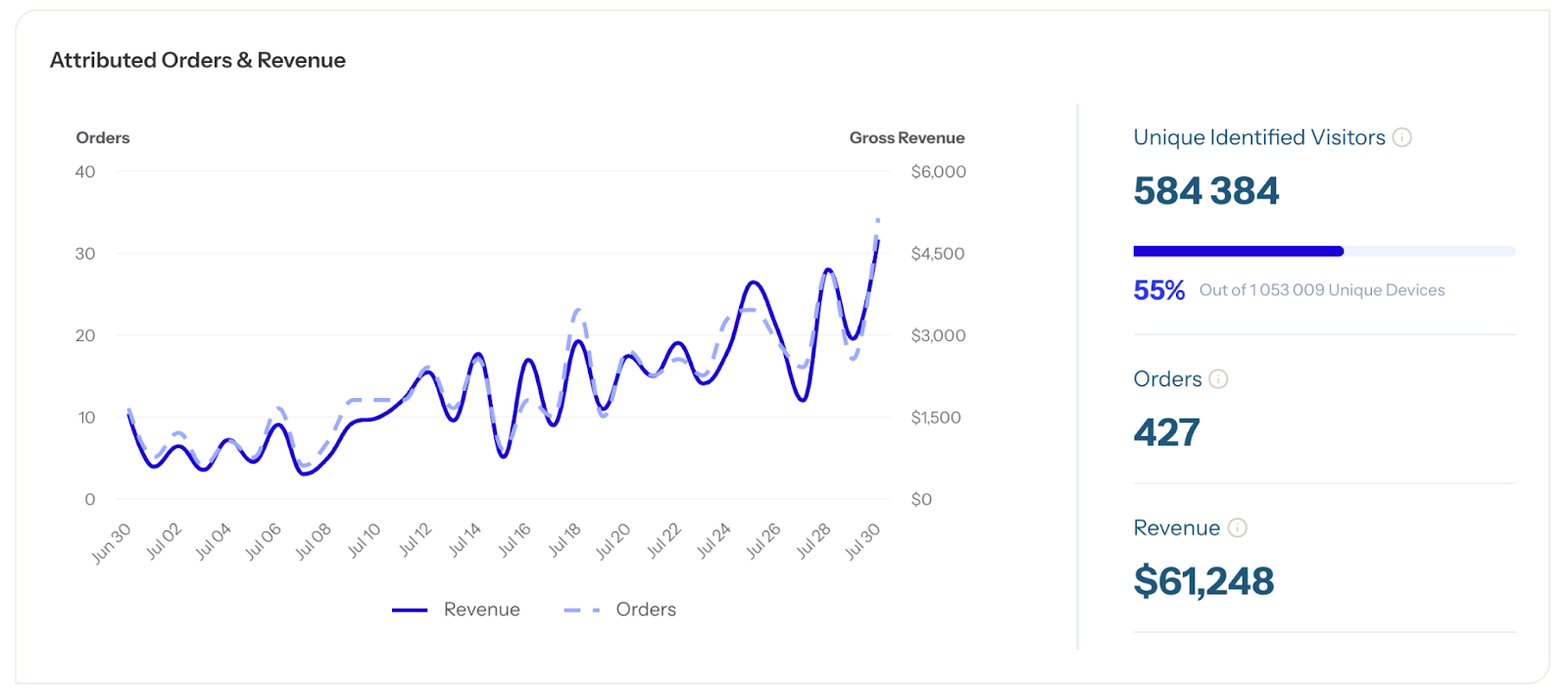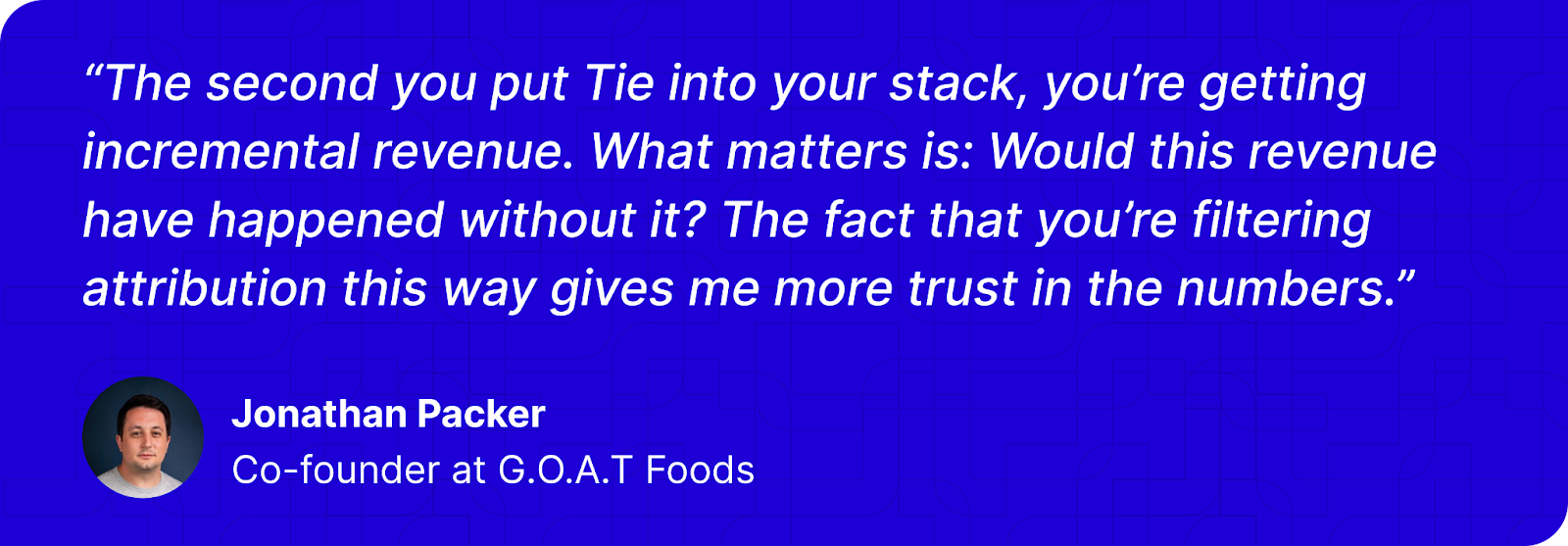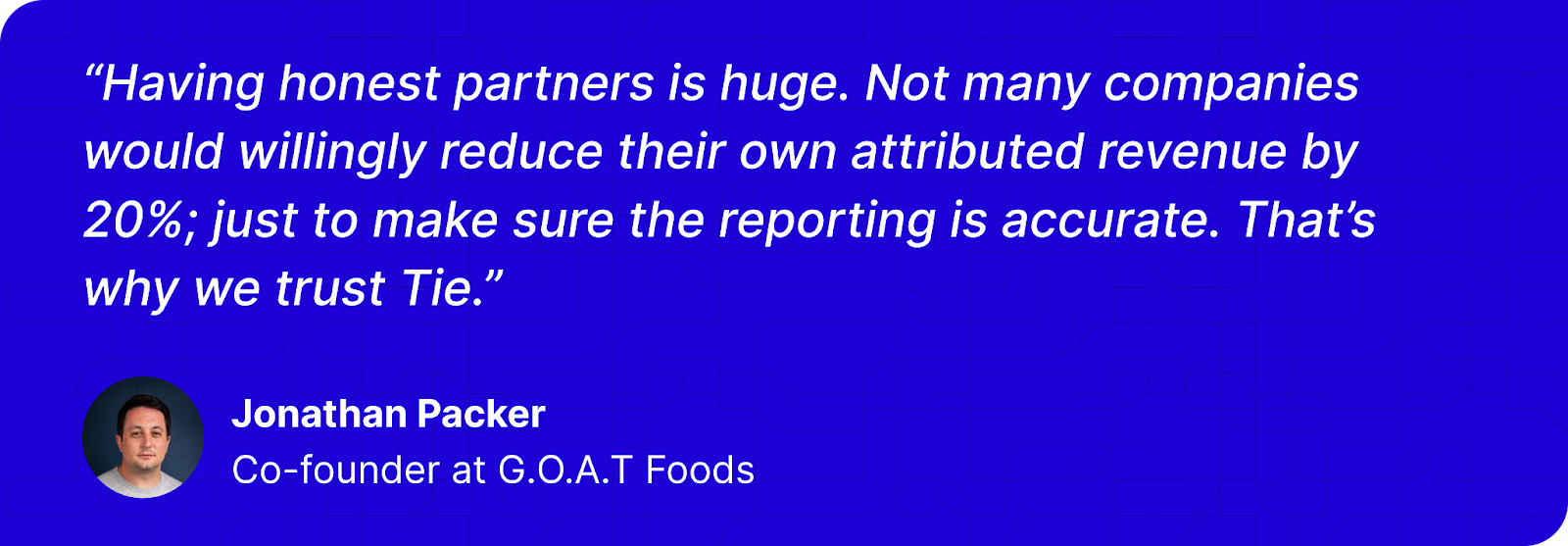Tie Attribution Update: Enhanced Klaviyo Revenue Attribution for More Transparent ROI

Most visitor identification tools have their own attribution models and they overstate performance. They credit revenue that would have happened anyway, whether from direct traffic, form fills, or pre-existing intent.
That’s why we’ve refined how Tie attributes revenue from events or new profiles sent to Klaviyo—giving you a clearer, more accurate view of the incremental revenue our visitor identity resolution solution is driving through your email flows.
For brands this means no inflated signals and reporting that you can trust to make to understand the impact your driving with the enhanced data Tie provides.
Updates to Tie’s revenue attribution

Tie’s new attribution logic eliminates inflated signals and focuses purely on incremental revenue you can confidently tie back to two audience types:
- New Profiles – shoppers who weren’t in your Klaviyo database before Tie identified them. For orders to count as incremental from this audience:
- The shopper’s Klaviyo profile must have been created by Tie.
- They must have received an email after that identification, then purchased.
- They cannot have filled out a form in the same session they were identified.
- Existing Profiles — shoppers who were already in your Klaviyo database but weren’t being tracked due to gaps like multiple devices, multiple emails, or cache clearing.
Tie picks up their web activity, syncs it to their Klaviyo profile, and ensures they’re enrolled in triggered email flows that would have otherwise been missed. For orders to count as incremental from Existing Profiles:
- The shopper’s web activity must have been recognized by Tie and no other tool.
- Klaviyo didn’t detect web activity from the shopper within 3 days before Tie.
- They must have received an email after Tie’s identification.
- Purchase must happen post-email.


What’s no longer counted
To maintain accuracy in attribution, Tie now excludes:
- Form-fill same session: If a shopper fills out a form right after being identified by Tie (within the same session), that revenue won’t count. This is because the shopper would’ve been captured through your form anyway.
- Purchases without email engagement: If no email was sent between identification and purchase, Tie doesn’t take credit, even if we were the tool that identified the shopper.
- Overlapping tool attribution (3-day rule): If another tool identified the shopper within 3 days before Tie did, and the brand sent them an email from that other tool, Tie doesn’t claim the attribution.
With this update, any revenue shown in your Tie dashboard passes a conservative, behavior-based filter. You only see revenue attribution when Tie’s identity resolution and triggered email outreach have played a measurable, sequential role in the conversion.
If you want to dig into how this change impacts your historical performance, you’ll see the retroactive adjustment already live in your portal.
Impact of better attribution for marketing efforts
Tie’s latest attribution update improves how revenue lift is measured, eliminating inflated credit and giving your team more accurate incrementality reporting inside your dashboard.
More reliable channel and flow-level analysis
With inflated revenue stripped out, you get a sharper view of how Tie impacts key parts of your funnel:
- List growth contribution: You’ll be able to benchmark list growth driven by Tie against your pop-ups, paid lead gen, and other list-building tactics without counting form fills twice.
- Email flow performance: Since Tie-attributed revenue now only includes shoppers who were identified and then received an email, you can clearly measure the incremental lift from Tie across your automated flows (like welcome, browse, and cart abandonment).
- Attribution share vs Klaviyo and paid channels: You can now assess how much incremental revenue Tie drives relative to Klaviyo-native sends, Meta retargeting, or Google Ads remarketing, without attribution overlap muddying the data.
Stronger internal reporting and budget decisions
For revenue and retention teams, this helps in three ways:
- Cleaner ROI reporting for leadership: When your CFO or CMO asks for marketing contribution breakdowns, you’ll be showing revenue that meets a tighter, more conservative standard for attribution.
- Better inputs for channel budget planning: If Tie-driven audiences are converting at a measurable rate post-identification + email send, you’ll have justification for scaling both identity capture and email investment.
- Higher confidence in flow testing and optimization: From iterating on offer strategy and subject lines to segmentation, you’ll know that the revenue baseline you’re testing against is clean with no false positives from misattributed orders.

Read the entire case study on how G.O.A.T Foods improved attribution accuracy and lead quality, driving incremental revenue by identifying 2.5M new shoppers.
Better incremental revenue attribution for ecommerce growth
If your numbers are inflated or unclear, you’ll end up over-investing in tactics that aren’t actually driving value. This is what Tie's new update aims to solve.
From real-time identity resolution and behavior-triggered email syncs to built-in deliverability tools and audience filtering controls, everything we build is designed to give you cleaner signals and more reliable revenue measurement.
If you’re already a Tie user, your dashboard is now running on this updated logic, giving you an accurate pulse on performance.
Not using Tie yet? See how we help brands uncover anonymous visitors, consensually and accurately. Book a demo now!







